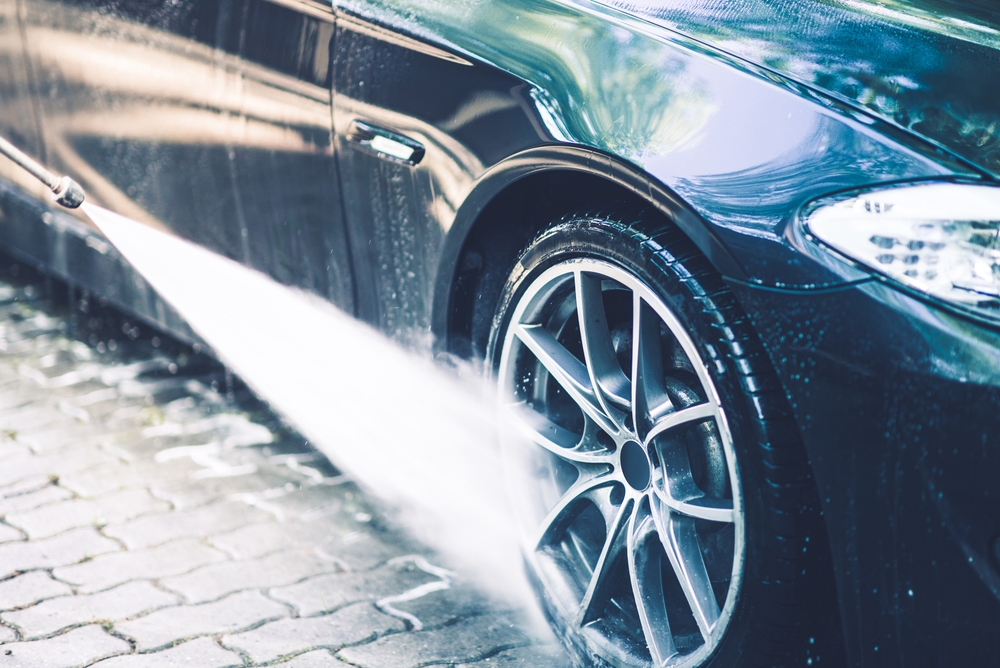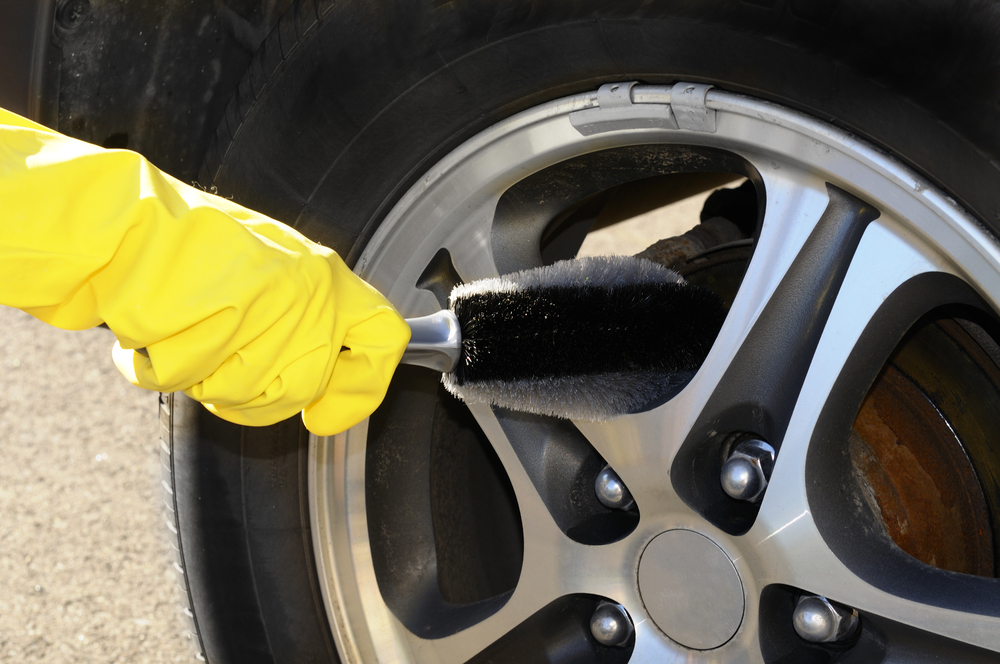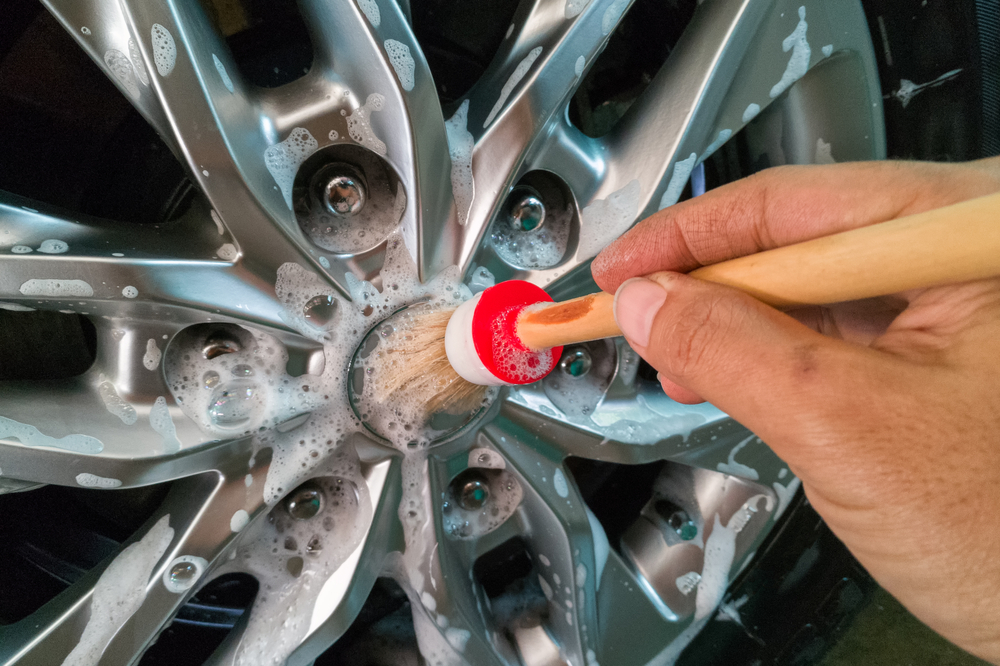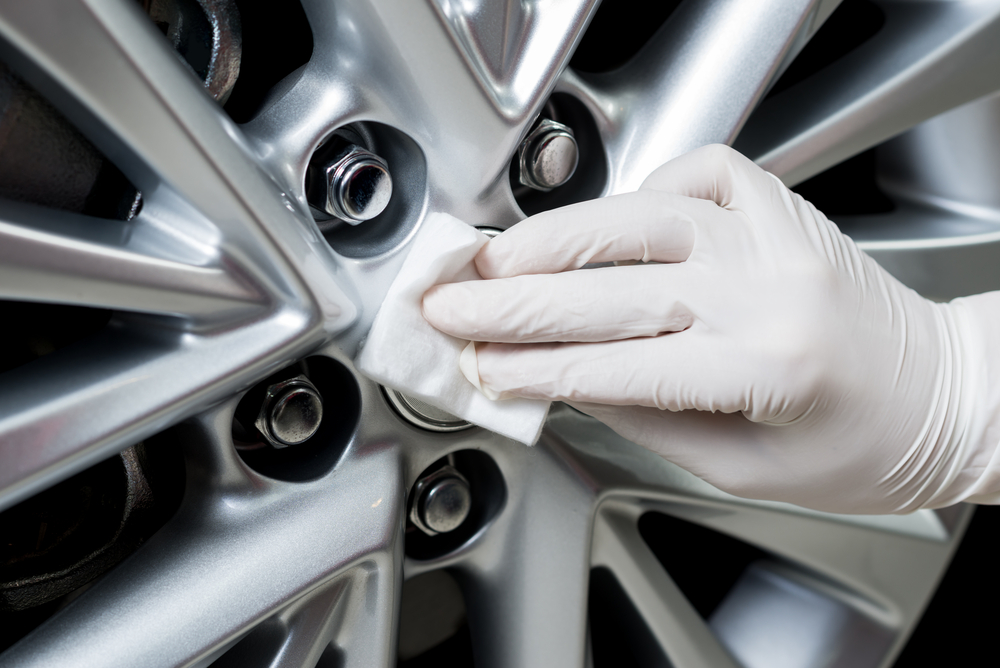
We already talked about cleaning the exterior of a car in this article. And while we mentioned how to clean car wheels there, here we will talk about that in a more detailed manner. The reason for that? It’s simple – wheels get most of the dirt when compared to other parts of the car. On top of that, the contaminants that land on the wheels can be very stubborn.
The first pollutant that comes to mind is brake dust. Produced by the abrasion between brake pads and rotors, it is tough to remove once it lands on a surface. Due to the location of the brakes, it mostly falls on the wheels, taking away from the shine. Other than brake dust, most contaminants from the roads also finish on the surface of the wheels.
While most car wash services clean the wheels, to fully get rid of all the contaminants, you should do it yourself. After a careful wheel detailing, the wheels on your vehicle will have the “like new” gloss again. Combine that with a detailed cleaning of the body and your car will look years younger.
Luckily, the car detergent market today is flooded with products that do a great job of restoring wheels. Some companies even offer specialized products for alloy wheels, chrome wheels, polished wheels, clear coated wheels, etc. You can also use some household items to clean the wheels if you are on a budget. To help you better understand how to clean the wheels on your car, follow our detailed guide below.
What is the best alloy wheel cleaner?
Before we start talking about the process of cleaning, let’s first find the best cleaner for the job. Honestly, no wheel cleaner sits way above others when it comes to quality. Products from CarGuys, Sonax, TriNova, and Meguiar’s are universally considered to offer excellent results across the board. Some of these companies provide specialized wheel cleaners for alloy, polished or clear coated wheels, while others offer universal products. All of them will do a great job – just be sure that you don’t use a cleaner not specified for your wheels.
Some wheel cleaners change color on the dirty areas. We recommend using them because they show if the wheels are clean. Spray the solution for a second or third time to check how clean your wheels are.
What household items can I use to clean my car rims?
You can also use some household items to clean alloy wheels. Acidic solutions such as lemon juice or vinegar can remove most of the grime. They are also cheap and won’t hurt the environment. However, specialized car wheel cleaners will do a much better job, and we wholeheartedly recommend them.
How to clean alloy wheels with WD40?
Some people also use WD40 to clean their wheels, but we don’t recommend that. WD40 is a lubricant which can worsen braking performance if it finishes on the braking rotors. Sure, it will protect the wheels from further contamination, but car care products work even better. If you still want to use it, apply WD40 on a soft cloth and clean the wheel. Never apply WD40 directly to the wheel!
Can you use bleach on alloy wheels?
Yes, you can, but you shouldn’t. Bleach can be aggressive to alloy wheels and leave stains, especially if left for too long. Some professional car detailing services do use bleach to clean alloy wheels, but those guys really know what they’re doing. For the average car owner, using bleach should be out of the question.
Best way to clean alloy wheels – a step-by-step guide
After we cleared out what type of detergent is best to use on your alloy wheels, we can move on to the cleaning process. Cleaning the wheels of your car requires a lot of water. That’s why we recommend doing it in an open space, preferably on a hard surface with drainage. Most car-care products today are eco-friendly, but you still don’t want the wastewater to finish on grass or plants.

Wet the wheel with plenty of water
Use a hose with a nozzle at the end to remove the loose dirt. If you don’t have a tube with a spout, you can create higher pressure by placing your thumb over the opening. The higher the pressure, the less work there is for the wheel cleaner.
When doing this, also be sure that you covered all parts of the wheel. Take your time and clean the rims on the outside and the inside if you want the best results.
Apply wheel cleaner on the rim and tire
Most cleaners today are applied with spraying. That said, some of them need to be diluted first and then poured into a spraying bottle. We recommend following the instructions that the manufacturer provided for the ratio of cleaner to water. After you applied the wheel cleaner, wait for few minutes for the detergent to start working itself through the dirt.

Use soft detailing brush with adjustable handle
Using a brush is the best way to get rid of all the dirt on your wheels, and especially brake dust. If possible, purchase a soft brush with adjustable handle. These brushes can get to places that others won’t, and they will also make life easier for you. When brushing, apply firm pressure and make sure that you cover all the areas. You can use the same brush both for the rims and tires.
Optionally, you can use a sponge for cleaning the wheels, but the results won't be as good as with a brush, especially if there's a lot of grime.

Use smaller brushes for the lug nuts and tight spaces
After cleaning the wheels with the bigger brush, you can use smaller brushes for tighter spaces. For example, use a round brush to clean to lug nuts and angled brush for close places. You can alternatively use an old toothbrush for tight areas. This part is essential as most of the dirt gets stuck in these places.
Rinse the wheels thoroughly
Even though modern wheel cleaners are gentle to alloy wheels, it is still recommended to rinse them off thoroughly. Use a lot of water, this time without too much pressure. Make sure that you leave no detergent on the surface.

Dry the wheels using a microfiber towel
Microfiber towels are best for drying the wheels because they leave no water spots behind. Make sure that the cloth you use is perfectly clean and that you drain it often.
(Optional) Apply wax or wheel glaze for further protection
Cleaning the wheels is only a part of keeping them protected. Applying wax or wheel glaze (spray wheel sealant) will protect them from further contamination in the coming months and keep them shiny for longer.
Before using sealants, read the instructions on the package to see how to apply them. You will also need a detailing pad to apply the sealant to the surface of the rim and clean microfiber cloth to remove any excess sealant. Usually, sealants should be left for 30-60 minutes to absorb into the metal and create a strong barrier.
